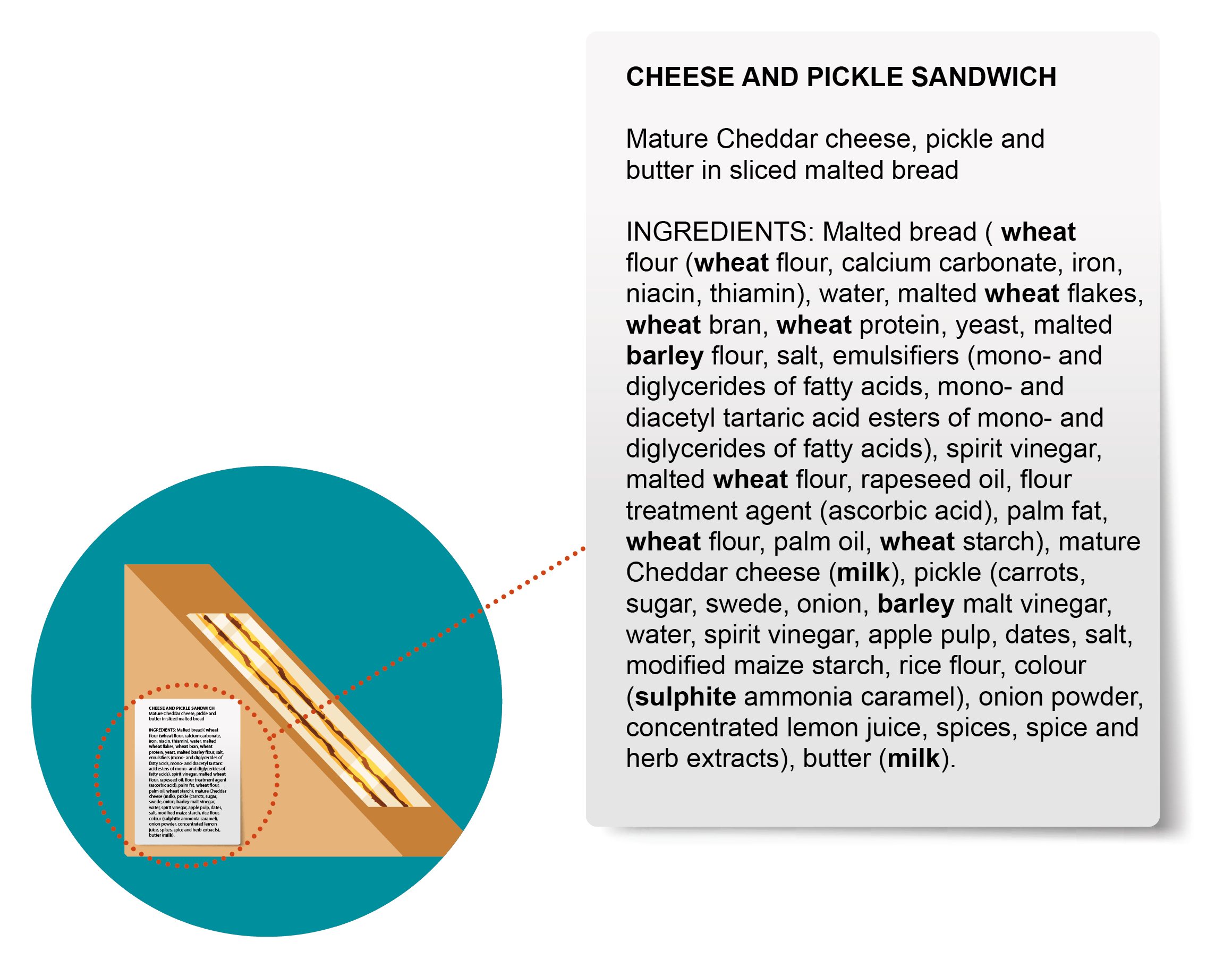
Best practice guidance on food allergen labelling
On 5 September 2023, the Food Standards Agency published updates to their food allergen labelling and information technical guidance. The update supports the Food and Drink Federation‘s guidance on Change Management of Allergen Information.
The FSA best practice technical guidance recommends changes in relation to how food businesses should use Precautionary Allergen Label (PAL) and advises that providers should:
– Only apply a PAL if there is an unavoidable risk of allergen cross-contamination which cannot be sufficiently controlled by segregation and cleaning.
– Specify which of the 14 major allergens the PAL refers to – for example, using “may contain peanuts” rather than a generic “may contain nuts” statement.
– Use PAL statements in combination with a ‘vegan’ label where a risk of cross-contamination with an allergen has been identified. A ‘vegan’ label communicates different information to a ‘free-from’ claim, which is food safety information aimed at different consumer groups.
The technical guidance goes into further detail about why businesses should not use a PAL statement alongside a “free from” statement and gives updated information on best practice for the use of No Gluten Containing Ingredient (NGCI) statements for food businesses in the non-prepacked food sector.
The FSA has also published a summary of the responses received to the consultation held between 27 March and 22 May 2023.
The initial ‘May Contain’ consultation
Between 6 December 2021 and 14 March 2022, the Food Standards Agency (FSA) conducted a public consultation on the provision of precautionary allergen labelling (known as PAL) and precautionary allergen information (PAI), such as ‘may contain’ on many types of food sold in England, Northern Ireland, and Wales.
Currently, labelling legislation requires that food products should indicate the presence of any of the 14 main allergens used as an ingredient or processing aid. However, in cases where there is a risk of unintentional allergen cross-contamination (for example, where multiple foods are prepared in the same kitchen), and the food business has established the risk cannot be sufficiently controlled, it is best practice for a precautionary allergen label statement to be used to communicate this risk.
The purpose of the ‘May Contain’ consultation
The consultation sought information and views relating to the provision of precautionary allergen labelling and information in order to consider potential approaches for both pre-packed and non-prepacked foods. The FSA’s aim is for information to be communicated more clearly and consistently, in an understandable and meaningful way to consumers, in terms of the form and content of the information and based on a proportionate and standardised processes for assessing, managing, and communicating the risk of allergen cross-contamination by food businesses.
The consultation consisted of closed and open answer survey questions focused on four themes:
1. Information provision to consumers
2. Compliance
3. Advice and training
4. Standards for risk analysis
The consultation response
A total of 2,459 responses were received, primarily via the online consultation. Of the overall responses, 84% were members of the public (1,882 respondents), 11% as businesses, trade body or related organisations (including Menu Guide) and 5% as Local Authority Food Officers, scientists, academics or clinicians. Additionally, 13 stakeholder workshops were conducted online.
Key findings
– There is strong support for standardising the wording and execution on precautionary allergen labels for pre-packed foods.
– ‘Not suitable for those with an allergy to [allergen]’ was the preferred statement.
– A PAL statement should only be applied following a risk assessment.
– The current guidance for business on the use of PAL is viewed as inadequate.
– There is support for the FSA voluntary standards on PAL use, namely: It should specify the allergen(s), it should not be used with a free-from label for the same allergen and it should only be used where there is an unavoidable risk of allergen cross-contact
– There is support for standardising information regarding the risk of allergen cross-contact within supply chains and setting allergen thresholds.
When asked about PAL statement wording, there was a strong support for simplicity and a common view that overcomplicating the label risks confusing consumers. Reponses stressed the importance of concise, clear labelling and Menu Guide shares the view expressed that ‘businesses believed that consumers just wanted to know whether a product is safe for them to consume or not’.
Standardised checklists
In addition to standardised PAL labelling on pre-prepacked foods, the idea of standardised checklists was also explored for food businesses selling non-pre-packed foods, such as those in the catering and hospitality sectors.
In the survey, the majority of respondents from all groups felt the following statements would be effective at communicating that allergen cross-contact is being managed effectively in a catering setting:
– ‘Separate utensils and equipment (for example, spatulas, trays, cutting boards) are used for customers with a food allergy’ (91% overall)
– ‘Allergenic ingredients and foods are stored separately on the premises and labelled clearly’ (83% overall)
– ‘All staff are trained on allergens and food hypersensitivity and we regularly checkin on staff practice’ (75% overall)
Additional findings
There was mixed support for the idea of providing further information to consumers via a website, QR code or booklet from the risk analysis undertaken by food businesses. With regards to training on allergens and PAL in general, only 1 in 4 (25%) of consultation respondents felt advice and guidance currently available to businesses is adequate to enable them to apply PAL appropriately. The perceived overuse of PAL labelling was identified by the public as indicative of problems with the current training support.
Outcomes and next steps
The consultation has given the FSA a fuller picture of the issues relating to how precautionary allergen labelling and information is provided and how that impacts upon consumer choice, safety, and trust. There was consensus that this information should be communicated more clearly and consistently in an understandable and meaningful way and be based on proportionate and standardised processes for assessing, managing, and communicating the risk of allergen cross-contamination.
There was significant support for improving and standardising allergen information within supply chains, so that all food businesses receive the precautionary allergen information they need, alongside the ingredients they source, to help enable any communication of allergen cross-contact risk to their customers to be as accurate as possible.
The FSA will use the information provided through this consultation and its social science research to develop a range of options which will enable food businesses to understand their responsibilities and the steps that they need to follow prior to providing precautionary allergen labels and information.
Read the full consultation report
Would you like to share more information with your customers? Try Menu Guide free for a month and see the difference it makes.

 Our Food – FSA & FSS Annual Review
Our Food – FSA & FSS Annual Review Best practice for allergen information
Best practice for allergen information Allergen information for distance selling
Allergen information for distance selling Draft guidance for allergen information
Draft guidance for allergen information Naming vegan alternatives to dairy foods
Naming vegan alternatives to dairy foods